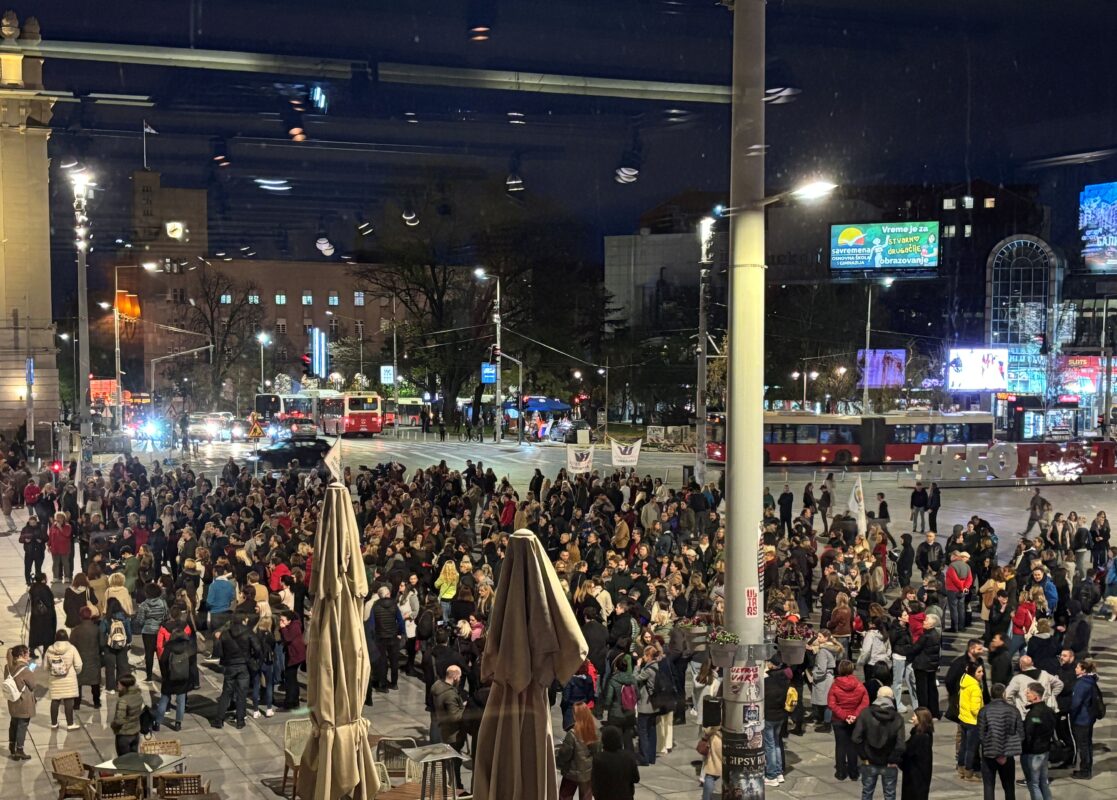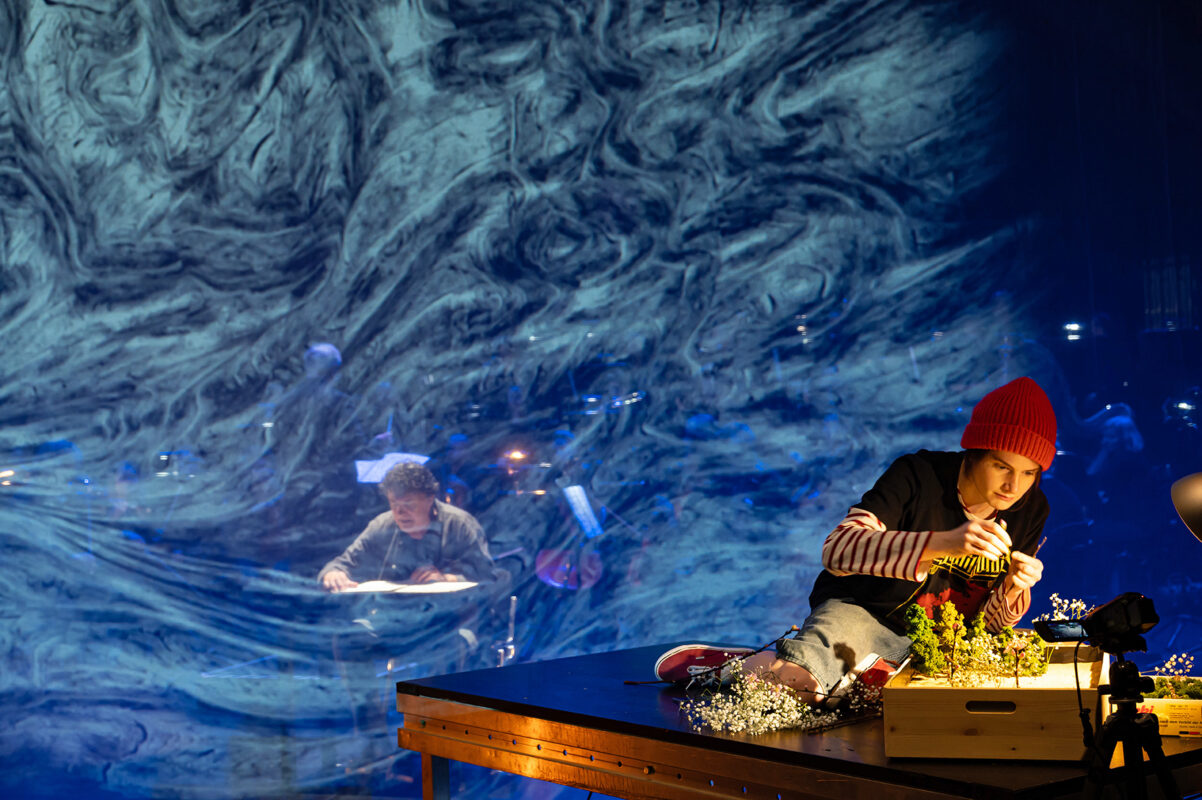Big bang and cosmic noise
The Bern Music Festival unites the region's musicians in a diverse program with unusual projects.
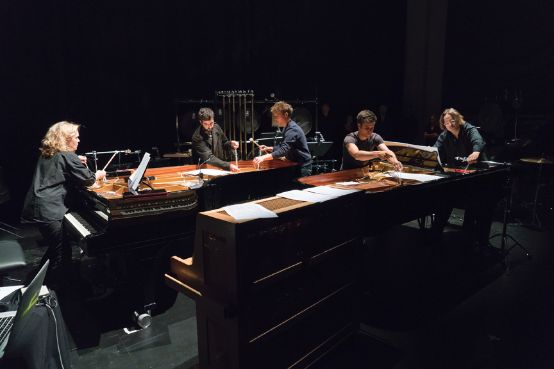
Every two years it takes over the Bern Music Festivalto bring together the wealth of local musical life - until now alternating with the interdisciplinary Biennale Bern. This year's fifth edition, entitled Big Bang From September 3 to 13, the festival offered an almost unbelievable series of events for all ages. It opened in the cathedral with the Genesis Suitea setting of texts from the First Book of Moses, premiered in 1945, in which prominent composers including Arnold Schönberg and Igor Stravinsky had participated. Alongside such traditional concerts were (dance) performances and sound installations; in Club Bonsoir, musicians from the computer and turntable scene presented their own remix of the festival's sound material; in the city, Zoro Babel and Andrea Lesjak let passers-by make music on their giant stone slab xylophone; and percussionist Fritz Hauser transformed Münsterplatz into a fascinating soundscape in his own choreography with around 120 small and large percussionists, string players and bell ringers. A series of scientific talks also explored topics relating to the "Big Bang".
-
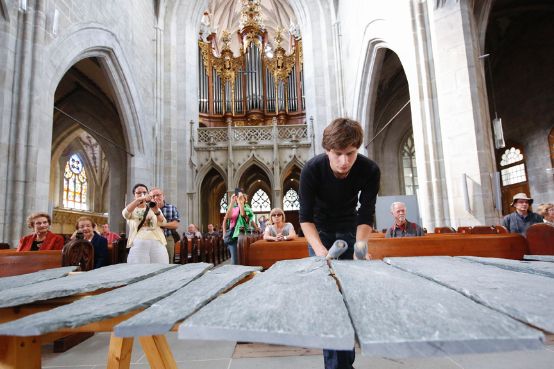
- Photo: Philipp Zinniker
- "Serpente Litophonie" in Bern Minster
Guard rails
The festival tradition began in 2007 with a major music festival to celebrate the 100th birthday of the composer and teacher Sándor Veress. Even then, the plan was to continue the format, says musicologist Hanspeter Renggli, but no longer to focus on a single personality. Renggli is head of the festival's program group and will remain president of the supporting association until the autumn. The program group, he explains, determines the festival motto. This is intended as a guard rail to prevent arbitrariness, but also to encourage the artists to make their own associations. For example, the term "Big Bang" can be associated with the findings of space physics as well as the biblical story of creation, the beginning of contemporary music in the work of Arnold Schönberg or the beginning of a love affair when you "fall in love". The program group examines all projects that are proposed for the festival. Cooperation between different institutions is particularly welcome. This is what makes the festival so special.
Ensemble collective
One such co-production of five (!) very different formations was the concert Planck at the Dampfzentrale. Two baroque orchestras, Die Freitagsakademie and Les Passions de l'Amethat ensemble protonthat Piano duo huber/thomet (Susanne Huber and André Thomet) and the percussion quartet Ensemble This/Ensemble That (the festival's ensemble-in-residence) played a clever program in which baroque music alternated with new pieces by younger composers who were inspired in different ways by the festival motto. Proton had been working with Leonardo Idrobo Adrift which creates elements from a mass of sound and light that expand and contract. The sounds of the ensemble are complemented by electronic feeds, spoken texts and the projection of colorful images. On this evening, however, only an excerpt without electronics and projection could be heard, a transparent network of colorful sound lines; the actual premiere took place a few days later. Huber/thomet and the four percussionists interpreted Cosmic Swoosh by Michael Pelzl. With two prepared concert grand pianos, celesta and gongs, the composer contrasts a dark and a light sphere - with tonal imagination, but somewhat schematically. At the beginning and end of the evening, the five groupings merged in Planck of the Basler Martin Jaggi to the ensemble collective. Jaggi refers to the Planck space probe, which was able to record the cosmic background radiation, the "footprint" of the Big Bang, for the first time. American physicist John G. Cramer's attempt to convert Planck's data into sounds forms the background of the piece in the form of a tape recording. Jaggi integrates the different instruments, which are also tuned differently, into a differentiated whole and finds distinctive sound combinations, for example in the dialog between the (amplified) theorbo and the softly struck gongs. The music-making was excellent throughout. The phenomenal violinist Meret Lüthi from Les Passions de l'Ame in one of the most memorable performances. Rosary-sonatas by Heinrich Ignaz Franz Biber.
-
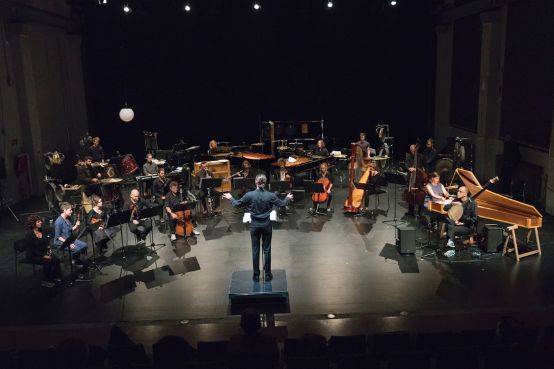
- Photo: Philipp Zinniker
- The ensemble collective interprets Jaggi's "Planck"
Future
The festival is currently facing important changes. In 2014, the city government decided to fund either the Biennale or the music festival in future and ultimately opted for the music festival. Since then, internal discussions about the future shape of the festival have been ongoing. It is clear that the city expects an opening to the outside world and more international appeal. However, it is equally clear that the event must not degenerate into a transit station for traveling stars. To this end, the artist-in-residence model is to be expanded, with more foreign artists - such as this year's percussion quartet - taking part in various events and thus helping to shape the program.






